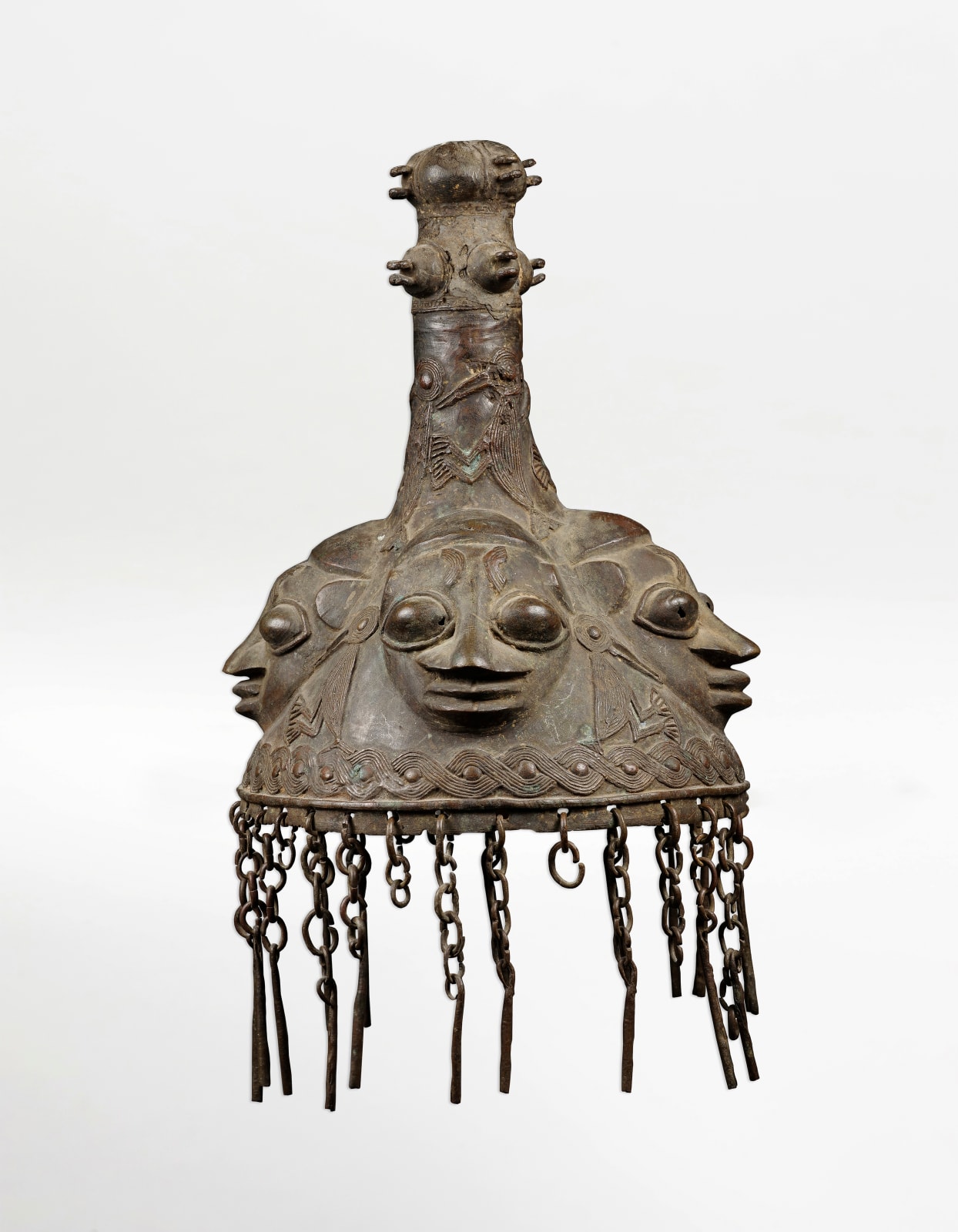Anonymous Yoruba artist
19th century or earlier
Copper alloy
height 10 1/4 in
Further images
While beaded crowns are well-known among the Yoruba, only a handful copper-alloy examples are known. Seen the typical crescent-shaped patterns on the foreheads of the masks, this crown was once worn by a high-level Oshugbo/Ogboni titleholder. The Oshugbo (or Ogboni) society is an age-old institution among the Yoruba that honors Mother Earth (Onile) as the source of life and the judge of all human actions. Having spiritual, political, and judicial powers, the Oshugbo society judges both kings and commoners and, with the assistance of the Oro society, meted out capital punishment to parties found guilty of serious offenses against Onile. Many elements of this crown’s design, such as the conical upward projection, signaled how the wearer was imbued with spiritual presence. The bulging eyes of the masks repeating this theme, for they evoke the moment of possession when, as worshipers explain, “the head swells” (ori wu) and divinity dwells within the devotee. This divine presence is that of Onile. Other sources concur how such protruding eyes indicated a statue of spiritual embodiment, when the inner eye (oju inu) presses against the outer eye (oju ode) of ordinary vision. The numerous horizontal loops on the upper section of the crown were used to hold red parrot feathers known as the “cloth of the elder (women)” (asho agba). Such feathers were an important sign of the spiritual powers of elderly women (‘our mothers’), who were said to be able to transform themselves into birds at night for the purpose of harming their victims. In Yoruba symbolism, an upright feather was a mark of ashe (‘the force to make things happen’), a force that all kings master. Such vertical projections on top of the crown were also a sign for powerful individuals such as chiefs and kings, to be exempt from ordinary responsibilities such as the balancing of head loads, which the feathers prevented. The presence of multiple birds in low relief across the crown render this symbolism even more explicit as they too suggest several royal mystical powers: control over ‘our mothers’ who fly in feathered form to bring doom to those who ‘rise too high’; and the wearer’s own powers of supernatural surveillance, as a positive ‘bird of the elders’, who works for the good of the community through evil. The motif of opposed crescents on the foreheads of the heads has also been interpreted as a cryptic reference to birds seen in profile. The four faces, indicating the cardinal directions, are said to represent the all-seeing gods or ancestors. As said, the bulging eyes call to mind the supernatural force of inner vision. This exceptional crown thus once symbolized the spiritual prowess of its prominent owner.
Provenance
Private collection, Brussels, Belgium













